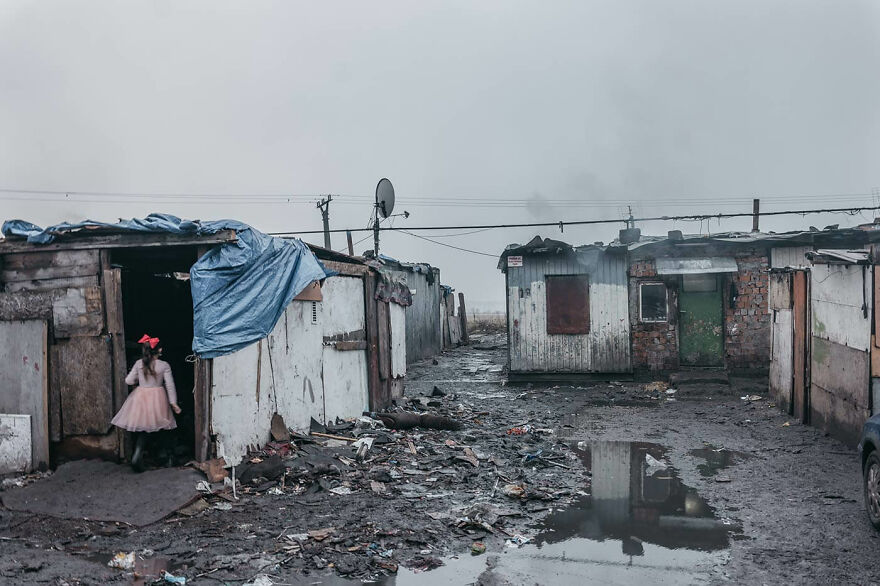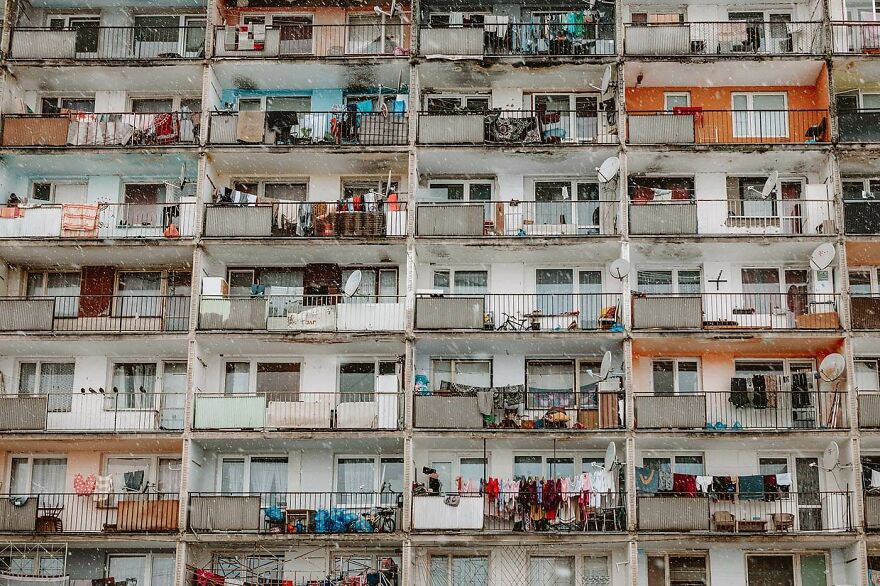
“The Roma Princesses”: This Photographer Documented The Tale Of Hope And Struggle In A Roma Ghetto (20 Pics)
''Once upon a time, there was a princess in the Roma ghetto. Society's racism and discrimination trapped her in the slum. Nevertheless, a brave prince tried to free her from the clutches of poverty and place the world at her feet.'' A dream that many girls in the Roma settlements probably have.
The girl from this fairy tale lives in Trebišov, one of the largest Roma ghettos in Slovakia. Around 7,000 people live here under precarious conditions in cobbled-together barracks or run-down tenements. Most apartments have no sewage system, no showers, no toilets and no kitchen. There is one single well for all residents. Trebišov, in eastern Slovakia, is one of around 800 settlements that exist, according to the 2019 Atlas of Roma Communities.
More info: all-about-photo.com | bergjournalisten.de | Instagram
This post may include affiliate links.
Around 450,000 Roma live in Slovakia. At around ten percent, they are the largest minority in the country. But already children have a difficult start. According to a 2022 study by the European Union, 2/3 of Roma children go to schools where only Roma are taught. The girl from the fairy tale also attends an all-Roma school in the settlement. The children often speak Romani, the language of the Roma, with their parents at home. Since there are no kindergartens for them, their Slovak language is often poor when they start school. They are enrolled in special schools that only Roma attend. The school material in nine years corresponds to the content that Slovak children learn in four years. Because of this, attending secondary school is almost impossible.
Discrimination and poor access to education prevent young Roma from breaking the vicious circle of poverty. According to the Slovak Interior Ministry, 48 percent of Roma are unemployed. Mostly they get day labour jobs. They have no regular routine and no hope for improvement. These prospects make life difficult to bear. Hopelessness has led many young people to become addicted to alcohol or drugs. No population group in Europe has to live in more inhumane conditions. On average, they die ten years earlier than other Slovaks.
I have some sympathy but frankly if the community won't help itself to start clearing at least some debris away and initiating change, that community needs to have a long hard look at itself and stop expecting the 'authorities' for their misfortune.
The bitter truth for the girls in the Trebišov Roma ghetto is that most princesses do not have a high school diploma, they have their first child before they are of age, they never leave the settlement and struggle to survive their entire lives.
Hugh, i can't reply to your comment but your lack of empathy and general compassion for others is disgusting.. maybe your brain needs looking at here
This is beyond heart breaking. It also makes me wonder why this exists in Europe at all? According to the average European BP reader, every country is a utopia of free healthcare, free education through college, the best social services on Earth and yet, their fellow Europeans, theirs neighbors in Slovakia live in such terrible, impoverished conditions. Maybe this can help them see that the country's of Europe too have their problems and they get neglected by focusing on other "terrible ' countries? That said, Slovakia is one of my favorite countries in Europe and outshines The Czechia Republic anyday, it's an unspoken jewel of Europe.
I am from Slovakia and had there free healthcare, education incl. masters. I am not Roma, I have bad experience with them once I lived in areas closer to them and would avoid them and be scared of them. I relocated to the UK over 7 years ago and still enjoying free healthcare here although in Slovakia I was getting much better care.
Load More Replies...Roma culture is a hard one for me, especially the treatment of women and girls. I always try to be respectful of the culture people come from, but when abuse and toxic beliefs thrive in certain cultures, it needs to be addressed. This doesn't mean I don't like the people of said culture, or feel they deserve less.or to.be discriminated against, but cultural practices that are toxic, dangerous, and abusive need to be addressed with the people of the culture and work.needs to be do e on both sides to change these practices while.still.retaining said culture. It.is bot just the Roma culture that has these issues, but it is the culture thos.article.is.discussing.
This is beyond heart breaking. It also makes me wonder why this exists in Europe at all? According to the average European BP reader, every country is a utopia of free healthcare, free education through college, the best social services on Earth and yet, their fellow Europeans, theirs neighbors in Slovakia live in such terrible, impoverished conditions. Maybe this can help them see that the country's of Europe too have their problems and they get neglected by focusing on other "terrible ' countries? That said, Slovakia is one of my favorite countries in Europe and outshines The Czechia Republic anyday, it's an unspoken jewel of Europe.
I am from Slovakia and had there free healthcare, education incl. masters. I am not Roma, I have bad experience with them once I lived in areas closer to them and would avoid them and be scared of them. I relocated to the UK over 7 years ago and still enjoying free healthcare here although in Slovakia I was getting much better care.
Load More Replies...Roma culture is a hard one for me, especially the treatment of women and girls. I always try to be respectful of the culture people come from, but when abuse and toxic beliefs thrive in certain cultures, it needs to be addressed. This doesn't mean I don't like the people of said culture, or feel they deserve less.or to.be discriminated against, but cultural practices that are toxic, dangerous, and abusive need to be addressed with the people of the culture and work.needs to be do e on both sides to change these practices while.still.retaining said culture. It.is bot just the Roma culture that has these issues, but it is the culture thos.article.is.discussing.

 Dark Mode
Dark Mode 

 No fees, cancel anytime
No fees, cancel anytime 

























































































